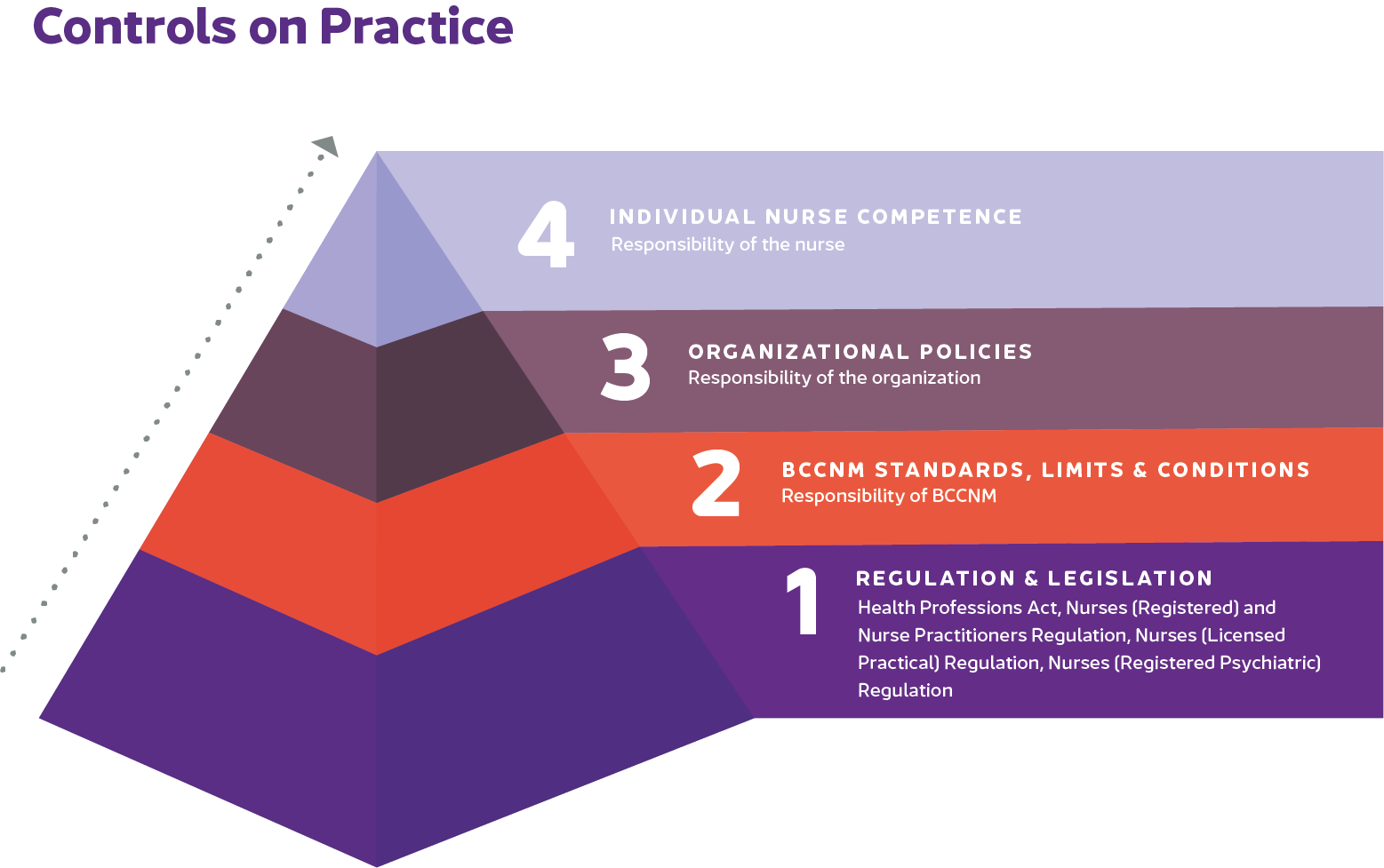Nursing scope of practice is shaped by more than just what's legally allowed. It is defined by four controls on practice: legislation, BCCNM bylaws and standards, employer policies, and the nurse's individual competence.
While nursing regulations may authorize certain activities, nurses can only perform them if permitted by all four controls on practice. Each control may narrow what a nurse is allowed to do, but none can expand beyond what is allowed by the level below.

Level 1: Legislation and nursing regulations
This level sets the legal foundation for nursing practice in B.C., through the Health Professions Act (HPA) and the Health Professions and Occupations Act (HPOA) and nursing regulations. These laws ensure that all nurses provide safe, ethical, and competent care. The legislated scope applies to all nurses, regardless of setting (e.g., hospital, community, long-term care, or self-employment).
Example: A nurse in an ER and a school nurse follow the same legislated scope, though they apply it differently based on their roles.
Level 2: BCCNM bylaws, standards, limits, and conditions
BCCNM sets practice standards and may place limits or conditions on certain activities authorized in the regulation. Bylaws may also set additional requirements for practice.
Example: BCCNM may require additional education before you are authorized to perform specific activities, like venipuncture.
Level 3: Organizational policies
Employers may create workplace policies that limit or specify how certain activities are performed. Sometimes, employer policies are more restrictive than legislation or BCCNM standards.
Employer's job descriptions should clearly outline a nurse's expected responsibilities within a specific role. Employers may require additional education or certification for nurses to perform certain activities.
If you are self-employed, you are considered the employer. It is therefore your responsibility to develop appropriate policies and procedures to inform your practice and that of your employees.
Examples:
- A hospital may allow nurses to insert IVs but require additional training before performing advanced IV therapy.
- A nurse working in an intensive care unit (ICU) may be authorized to assist with ventilator management, whereas a nurse in a long-term care facility may not be.
- A nurse may be legally allowed to perform a certain activity, but their employer may prohibit it due to safety concerns, resource limitations, or organizational policies.
Level 4: Individual nurse competence
While legislation/regulations, BCCNM standards, and employer policies define what nurses are allowed to do, a nurse's individual competence determines whether the nurse can safely perform an activity.
Competencies are unique to each nurse and expand with additional education and experience. Example: A nurse who has been practicing for 20 years will have a greater scope of practice based on their competencies than a newly graduated nurse.
The controls on practice help ensure that every nursing activity you perform is safe, appropriate, and within your legal scope of practice. By walking through each level—legislation and regulation, BCCNM standards, employer policies, and your own competence—you can determine whether you are authorized and safe to proceed. The final consideration before performing any activity is whether it is in the best interests of the client. Remember, just because you can doesn't mean you should.